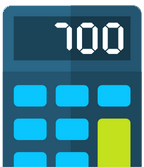How much is the 2017-18 Personal Allowance?
The Personal Allowance for the 2017-18 tax year is set at £11,500. This is an increase of £500 from the previous tax year.
What does this mean?
This means that you can earn up to £11,500 before you have to pay any income tax.
Do I get a new tax code?
Yes, the numbers in your new 2017-18 tax code will change to 1150L, if you are a Basic Rate taxpayer.
Please bear in mind that not every taxpayer will have the same tax code, you need to check yours is correct for your circumstances.
When does this come into effect?
These new figures apply from the 6th April 2017 until the end of the tax year, 5th April 2018.
Is the Basic Rate tax band staying the same?
No, the Basic Rate limit is going up from £32,000 to £33,500.
What about Higher Rate taxpayers?
The Higher Rate threshold is also rising from the current £43,000, to £45,000. This means that you only start paying the 40% Higher Rate of tax on income over £45,000.
All income tax allowances
There are different income tax allowances available depending on your own set of circumstances. See below for the full list for the tax year 2017-18:
- Personal allowance,
£11,500 - Income limit for personal allowance, £100,000
- Income limit for Married couple’s allowance, £28,000
- Marriage allowance, £1,150
- Blind person’s allowance, £2,320
- Dividend allowance, £5,000
- Personal savings allowance for basic rate taxpayers, £1,000
- Personal savings allowance for higher rate taxpayers, £500
Is this the same throughout the UK?
The personal allowance amount is the same across the UK. The Scottish Government can now set their own rates and bands of income tax, and they are not the same in 2017-18. Scotland is keeping the higher rate tax limit at the current £43,000.
Income Tax Calculator
Estimate how much tax you should pay on your income...







